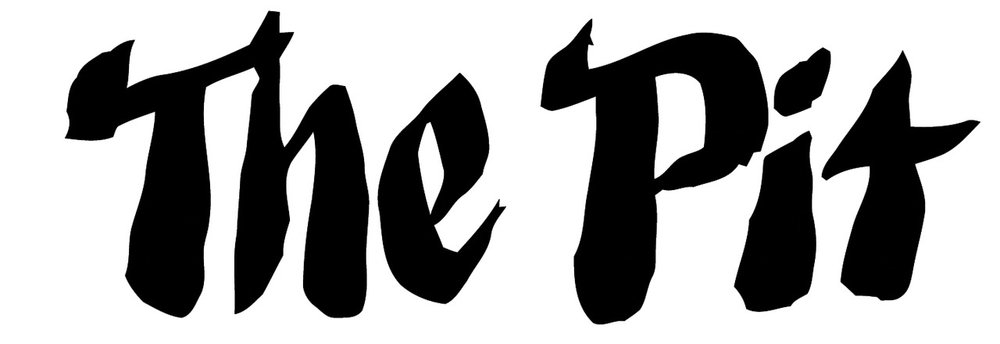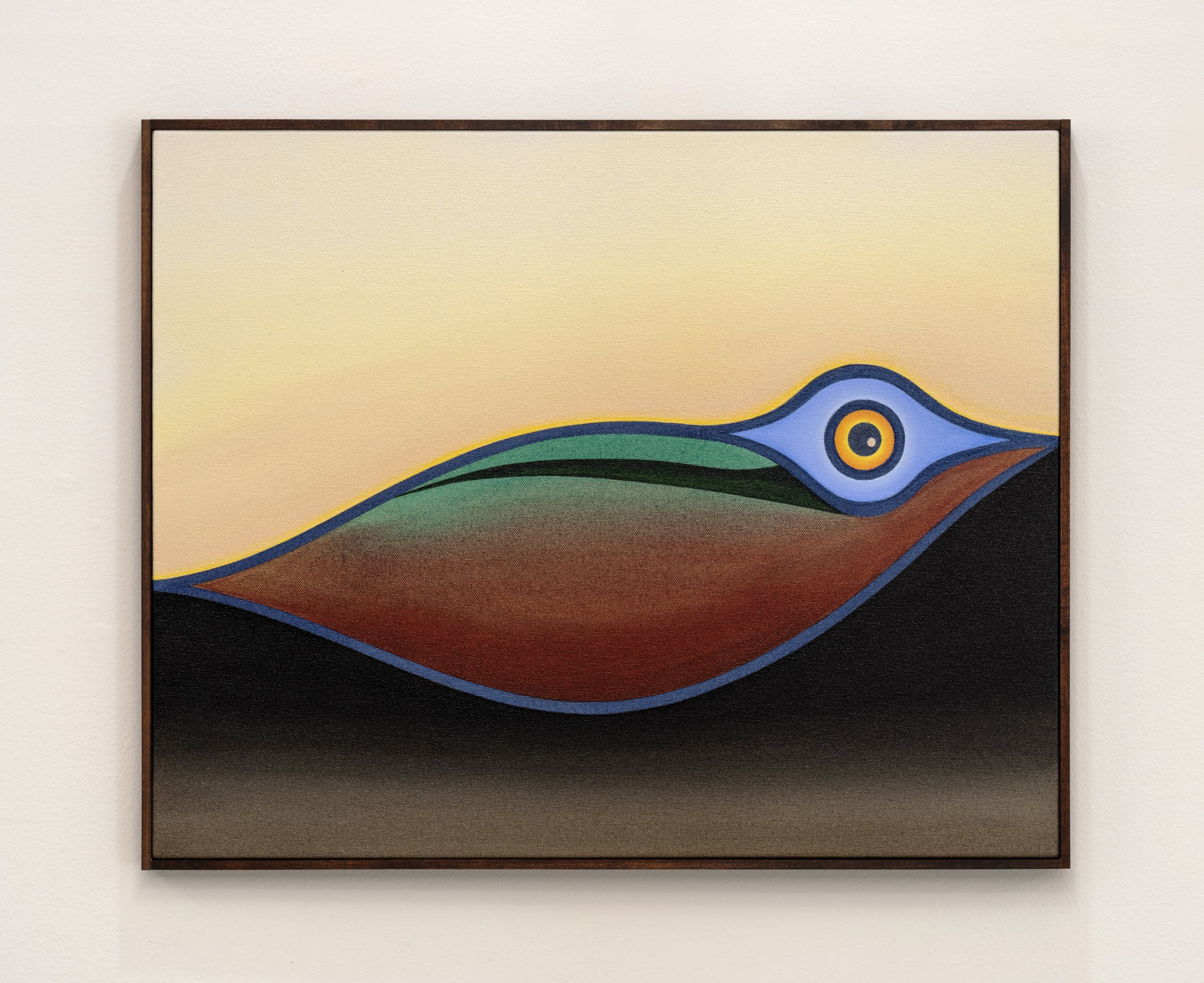Erik Frydenborg and Anthony Miler
Erik Frydenborg and Anthony Miler
November 12, 2022 - January 21, 2023
The Pit Palm Springs
The Pit is delighted to present a two-person exhibition of paintings by Anthony Miler and a sculpture by Erik Frydenborg, artists based in New York City and Los Angeles respectively. The exhibition will be on view at the gallery’s Palm Springs location from November 12, 2022 - January 21, 2023 with an opening reception on Saturday November 12 from 5-7PM.
Miler and Frydenborg are artists whose work telegraphs backward and forward through time. Though working with distinct sets of reference points and individual concerns, they share a commitment to abstraction as a means to pry open a space of strangeness, of temporal and representational dislocation, but also of reflection and contemplation. They equate abstraction with distortion – not only of their aesthetic sources, but also of associated ideas around speed and slowness; substance and immateriality; serenity and balance; truth and informational integrity.
Anthony Miler’s pensive, atmospheric paintings emerge from his long and intensely thoughtful engagement with the history and conventions of picture-making. Are they landscapes, figures, or faces? Ornithological art? Non-objective abstractions? In truth, Miler has invented his own pictorial category, which draws from all of the above but falls neatly into none. He builds on a long-term inquiry into the possibilities of his craft. A separate, preceding strand of his work features expressively drawn faces and figures, often in graphite on unprimed canvas. In the finely honed, sharp-edged compositions exhibited here, consistent with a body of work he has developed in recent years, the face is distilled to a single, simplified eye. Miler has described his early works in this style as “facial landscapes.” The face is conceived as a landscape – aren’t all faces, when you look long enough at them? – and, conversely, the landscape is conceived as a subject with autonomy and agency, gazing back at the viewer. In his book The Object Stares Back, art historian James Elkins describes how seeing is a reciprocal process, in which other beings – and even inanimate objects – acknowledge and echo our gaze. He considers not just eyes but also animals, microscopic life forms, camouflage, bio-mimicry, reflective surfaces, light-emitting beacons and stars, cookies, nipples and many other things that attract our gaze. “I see and I can see that I am seen, so each time I see I also see myself being seen,” he writes. As we stand in front of Miler’s paintings, watching them unfold into planes of solidity and ethereality, figure and ground, we are pinned in place by the returned gaze of those solitary eyeballs. None are threatening or aggressive, however, still less accusatory, although there is a sense in which they hold us to account, make us feel responsible to the artwork. They give us pause, slow down our bodies and our looking. Miler has said that he aims to convey a kind of meditative peacefulness through these paintings, a frame of mind that one imagines he enters into when making them, but which is as much about our looking inwards at ourselves as looking into the painting. Miler’s birds, emphatically depicted in earlier paintings but more subtly intimated here, are not really ornithological (although, Miler has admitted he is drawn to their ancient genetic lineage and pre-existence of Homo sapiens). The bird motif, he says, is “a wide door for people to walk though,” an expedient point of entry into the lush expanses of the paintings themselves. In many instances it is not easy to separate the figure from the background, or the body from the sky. Suns or moons feature in several paintings, although often they appear more like circular holes punched in a planar backdrop than floating heavenly bodies. Miler is as much a painter of light as he is a painter of form. The thin lines that hem his shapes recall the lead in stained glass windows, and the narrow frame around the canvas a window casing. His canvases are containers for light and color, contrasting textures and media.
Erik Frydenborg’s sculptures are containers too – albeit containers whose original contents have been emptied out and which have been skewed beyond recognition, the container itself becoming a new form of content. At first encounter, a sculpture such as X-Ordiiinnnaaa appears to project a dauntless confidence in its status as a fantastical, future-facing object. It evokes high-end sports’ equipment or weaponry, or, as the artist has written of previous works, “the buoyant and hyperbolic technical design” of sneakers and toothbrushes. Things that fit into or against the human body, in other words, but which promise to render that body superhuman. But something is not quite right in Frydenborg’s work. One would expect objects such as these to be mass produced, perhaps molded from polyurethane plastic or foam rubber. (Media that have appeared in some of Frydenborg’s earlier sculptures.) They evince barely perceptible inconsistencies, however: subtle dents and doughy areas of softness. In fact, they are hand carved and sanded from sections of basswood and poplar. Instead of sprayed lacquer or powder coating, on (very) close inspection their surfaces can be seen to have been painted with a brush. Despite being finished to a very high standard of craftsmanship, they remain undeniably handmade. Frydenborg’s process involves sourcing informational illustrations from old encyclopedias and vintage manuals, which he dissects, collages into new abstract forms, scans, then warps, using digital software, into wild formal aberrations. The kinds of images Frydenborg is drawn to convey a stolid, matter-of-fact simplicity: cutaway diagrams showing how things work, or how they should be constructed; also infographics, maps and graphs. Many of them are shaded with halftone patterning. Their certainty about themselves is reflected in their stark black and white presentation. When passed through Frydenborg’s sequence of modulations – which finally entail these 2D monochromatic images being outputted as 3D colored objects – that initial certainty evaporates, leaving an artwork that is deliberately indeterminate. Is it futuristic or retro? Analog or digital? Handmade or mass-produced? Folksy or technological? The halftone dot pattern – now stretched into vertiginous swirls of ellipses – is digitally cut into an intricate stencil, through which Frydenborg hand-applies acrylic paint. He is inspired as much by science fiction illustration and cinematic production design as he is by the painted wooden Folk art that abounds in Pennsylvania, where he grew up. The scientist Samuel Arbesman has identified a category of information he terms “mesofacts” – data that gradually expire, too slowly for most to notice, but fast enough for encyclopedias from the 1970s and 80s to be mostly obsolete today. The half-life of such facts, Arbesman estimates, is around 45 years. This year, Frydenborg celebrated his 45th birthday. While sculptures like X-Ordiiinnnaaa speak to our “post-truth,” post-digital age, they also relate, more subtly, to personal anxieties around the vertigo of aging and mortality, cultural obsolescence and the potential of art to access alternative timescales. As Frydenborg has written: “I wanted my work to represent legible data that had undergone some fundamental transformation — a kind of deep dreaming, or death, or encryption — and then reemerged in the form of a resistant Delphian artifact.”
—- Jonathan Griffin
For further information, please contact the gallery at info@the-pit.la.
Anthony Miler, Not Titled, 2022, Oil, acrylic, and graphite on canvas, 29 x 34 in.
Anthony Miler, Not Titled, 2022, Oil, acrylic, and graphite on canvas with maple frame, 28 x 35 in.
Anthony Miler, Not Titled, 2022, Oil, acrylic, graphite on canvas with stained maple frame, 28 x 24 in.
Anthony Miler, Not Titled, 2022, Oil and acrylic on canvas, 31 x 39 in.
Anthony Miler, Not Titled, 2022, Acrylic on canvas with maple frame, 29 x 35 in.
Anthony Miler, Not Titled, 2022, Acrylic on canvas with maple frame, 20 x 25 in.
Anthony Miler, Not Titled, 2022, Oil and acrylic on canvas with maple frame, 30 x 40 in.
Erik Frydenborg, X-Ordiiinnnaaa, 2022, Acrylic on basswood, 24½ x 56 x 7 in.













